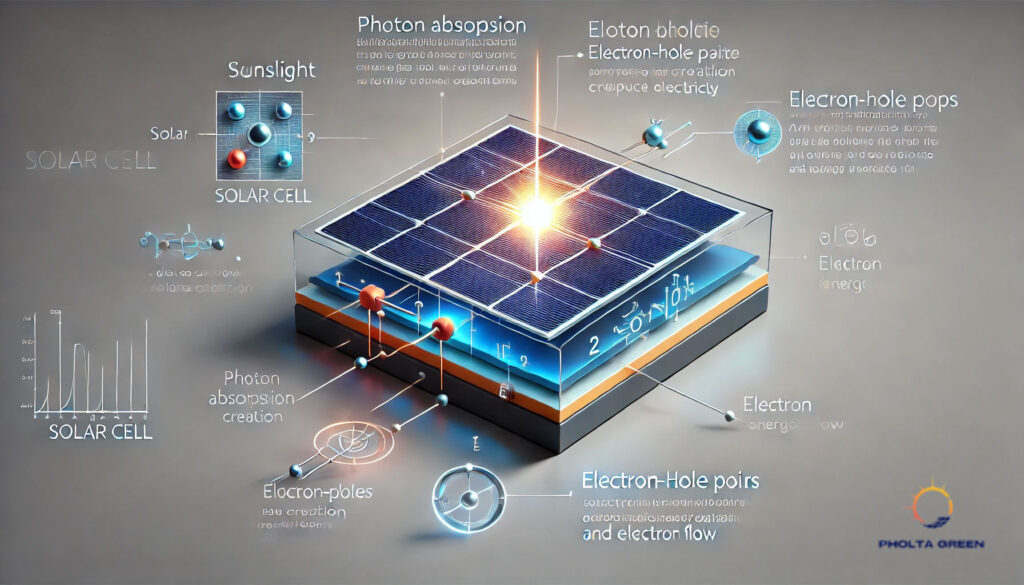We need to consider both the nature of the material and the nature of sunlight in order to understand the operation of a PV cell. Solar cells consist of two types of material, first often p-type silicon and secondly n-type silicon. Wavelengths o f a certain lights able to ionize the atoms in the silicon and the internal field produced by the junction separates some of the positive charges (holes) from the negative charges (electrons) within the photovoltaic device. The holes are swept into the positive layer and the electrons are swept into the negative layer. Although these opposite charges are attracted to each other, because of the internal potential energy barrier most of them can only rejoin by passing through an external circuit outside the material. Therefore if a circuit is made, power can be produced from the cells with lighting, so the free electrons have to pass through the load to rejoin with the positive holes. The power gained from a PV device is regulated by;
1-First, the type and area of the material,
2- Second, the wavelength of the sunlight,
3- Third the intensity of the sunlight.
Single crystal silicon solar cells can not convert more than 25% of the solar energy into electricity, because of the radiation in the infrared region of the electromagnetic spectrum does not have enough energy to separate the positive and negative charges in the material. Because of the higher internal energy losses than a single crystal silicon, polycrystalline silicon solar cells have an efficiency of less than 20% and amorphous silicon cells are presently about 10% efficient. A typical single crystal silicon PV cell of 100cm2 can produce about 1.5 watts of power at 0.5 volts DC and 3 amps under full sunlight (1000wm-2 ) . The power output of the cell is directly proportional to the intensity of the sunlight. It means for example, if the intensity of the sunlight is halved the power will also be halved. Another important feature of PV cells is that the voltage of the cell does not depend on its size, and remains fairly constant with changing light intensity. However, the current in a device is almost directly depend to light intensity and size. When we look different sized cells, we need to record the current density, or amps per square centimeter of cell area. To increase the power output of a solar cell, it should keep the PV device directly facing the sun, or by concentrating the sunlight using lenses or mirrors. However, there are limits to this process, due to the complexity of the mechanisms, and the need to cool the cells. Temperature affects the voltage. The current output is relatively constant at higher temperatures, but the voltage is reduced, leading to a drop in power as the cell temperature is increased.

